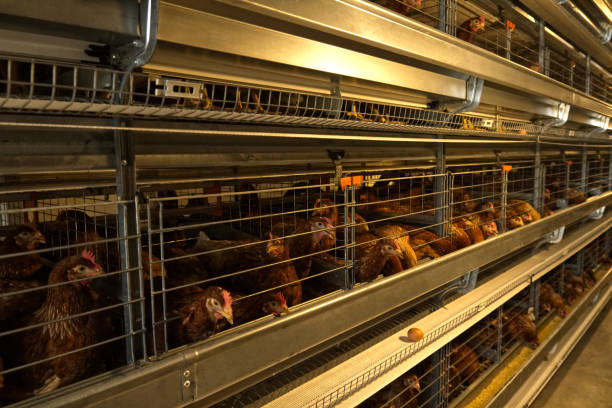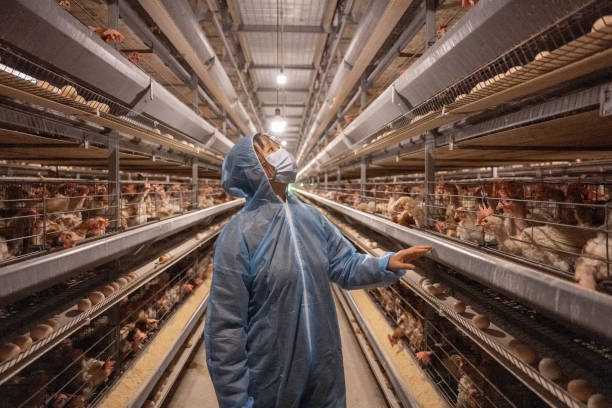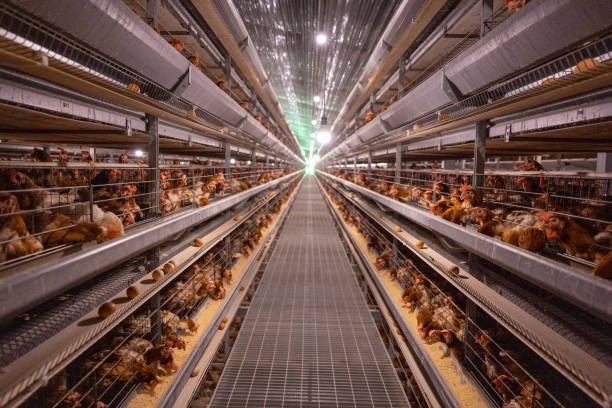
Organic Broiler Chicken Raising: Cage-Free Solutions
Organic Broiler Chicken Raising: Cage-Free Solutions
When it comes to organic broiler chicken raising, more and more farmers are stepping away from traditional caged systems and turning toward cage-free solutions. This shift isn’t just about animal welfare—though that’s a major factor—it’s also about improving meat quality, meeting consumer demand for clean-label products, and future-proofing your farming operation. At Livi Machinery, we’ve worked with poultry producers across Asia, Africa, and South America to design modern, scalable cage-free environments that balance ethics, efficiency, and profitability.
If you’re considering transitioning to cage-free organic broiler production, or simply want to understand how it works and whether it’s right for your farm, this guide will walk you through everything you need to know—from housing design and bird behavior to feeding strategies and long-term sustainability.
The Growing Demand for Organic and Cage-Free Poultry

Let’s start with the big picture: global demand for organic meat is skyrocketing. According to recent market reports, the organic poultry sector is growing at over 10% annually, fueled by health-conscious consumers, stricter food safety standards, and increasing transparency in the food supply chain. People are asking questions like: What did the chicken eat? Was it raised indoors or outdoors? Did it have space to move?
This awareness has made “cage-free” a selling point—not just a buzzword. But don’t confuse terms: cage-free doesn’t always mean organic, and organic doesn’t guarantee free-range access. However, true organic broiler farming almost always includes cage-free conditions because certification bodies like USDA Organic or EU Organic require birds to have continuous access to open areas, natural light, and enough room to perform instinctive behaviors like scratching, pecking, and nesting.
So what does this mean for your farm? It means you can tap into a premium market segment—where customers pay more for high-quality, ethically raised meat. But it also means you must be ready to invest in infrastructure, management practices, and monitoring systems that support healthier birds and cleaner operations.
How to Design a Successful Cage-Free Environment

Transitioning from conventional cages to cage-free housing isn’t as simple as removing the wire and opening up the barn. Chickens raised without cages need carefully designed environments to thrive. Poor planning can lead to problems like increased mortality, footpad dermatitis, breast blisters, or poor weight gain—all of which hurt both animal welfare and profits.
At Livi Machinery, we recommend starting with three core principles: space, structure, and climate control.
First, give them room. Organic standards typically require minimum indoor stocking densities—often around 30 kg/m² live weight (or roughly six to eight medium-sized broilers per square meter). But going beyond the bare minimum makes a difference. More space reduces stress, aggression, and disease spread. Ideally, combine deep litter flooring with elevated platforms and perches. These features encourage active movement and help prevent leg issues and skin lesions.
Second, manage airflow and temperature. One big myth about cage-free farms is that birds regulate themselves better naturally. Not exactly. In reality, good ventilation is even more critical when chickens are walking on litter. Moisture buildup under the birds leads to ammonia spikes, respiratory issues, and bacterial growth. That’s where tunnel ventilation systems, automatic foggers, and insulated roof panels come in. Our modular house designs allow for optimal air exchange while keeping energy costs low—even in extreme weather.
Third, prioritize biosecurity. Open access areas sound ideal until wild birds bring in pathogens. A well-planned cage-free system includes covered outdoor runs, insect screens, footbaths, and separate entry zones. We also suggest installing automated feed and water lines that reduce spillage—because wet litter ruins any cage-free setup.
Smart Feeding and Health Monitoring Strategies
You can build the perfect barn, but if your feeding strategy hasn’t evolved, performance will suffer. Organic broilers grow slower than conventional ones—they’re not genetically bred for rapid weight gain—and they rely heavily on certified organic feed, which usually contains no synthetic amino acids, antibiotics, or GMOs.
That means nutrition has to be spot-on. Work closely with a poultry nutritionist to formulate balanced diets using non-GMO grains and plant-based proteins. Also, consider phase feeding: starter, grower, and finisher rations tailored to different stages of development. With cage-free flocks, uniformity matters too. Without proper feeder placement and spacing, dominant birds hog resources while others fall behind.
To combat this, use round feeders with adjustable height or linear chain systems that distribute feed evenly throughout the day. Automated drinkers with nipple valves are essential—we install ours just above head height so birds stay dry and hydrated without creating puddles.
Now let’s talk monitoring. One advantage of moving away from cages is that you get closer to the birds—literally. You’re able to observe their gait, feather condition, droppings, and activity levels daily. Keep records of average weight, feed conversion ratio (FCR), and mortality rates. Use these insights to fine-tune your routine.
For larger operations, smart sensors are game-changers. We integrate IoT-enabled tools that track ambient humidity, NH₃ levels, drinking patterns, and even noise levels (yes, chickens vocalize more when stressed). Alerts go straight to your phone, letting you respond quickly before things escalate.
Making the Transition Practical and Profitable
Switching to cage-free organic production takes time, investment, and patience. You won’t see immediate returns, especially if you’re retrofitting an old caged house. But here’s the good news: once established, organic broiler farms often enjoy better margins thanks to brand loyalty, reduced medication costs, and lower environmental fines.
Start small. Run a pilot batch—say, 2,000 birds—in a converted shed or new mobile coop. Test your feed program, assess labor needs, and gather feedback from buyers. Then scale gradually as you gain confidence.
We at Livi Machinery offer turnkey support during this journey. From site assessment and layout planning to equipment installation and staff training, we handle every step. Whether you’re building a single poultry house or launching a full-scale integrated farm, our goal is to make sustainable farming easier, smarter, and more profitable.
If you’re serious about exploring cage-free organic broiler solutions, now’s the time to act. Leave us a message with your farm size, location, and current setup—and we’ll send you a customized proposal within 48 hours. Let’s build a better future for poultry farming—together.
Frequently Asked Questions
What’s the difference between cage-free and free-range broilers?
Cage-free means chickens are not kept in wire enclosures and have room to move inside a barn. Free-range goes further by requiring outdoor access for a certain number of hours each day. All free-range broilers are cage-free, but not all cage-free birds go outside.
Can I convert my existing caged house into a cage-free system?
Yes, but it depends on the structure. You may need to reinforce floors for deep litter, add ventilation units, install perches, and upgrade feeding systems. We can evaluate your current facility and recommend cost-effective upgrades.
Are cage-free broilers harder to manage?
They require more attention to litter quality, air circulation, and flock behavior. But with good automation and routines, many farmers find them easier to care for in the long run—especially since fewer medications are needed.
How much does it cost to set up a cage-free organic broiler farm?
Costs vary based on size and region. For a 5,000-bird unit with basic automation and outdoor access, expect $30,000–$50,000 USD. Larger commercial setups range from $100,000 to $300,000+. We offer flexible packages and financing guidance.

Do organic broilers grow slower than conventional ones?
Yes. While standard broilers reach market weight in 5–6 weeks, organic breeds take 8–10 weeks due to breed selection and feed restrictions. However, the meat tends to be firmer, juicier, and preferred by gourmet markets.
Is organic certification difficult to obtain?
It takes time—usually 12 months of transition—but it’s achievable with documentation, inspections, and adherence to regional standards. We partner with certifiers and provide record-keeping templates to simplify the process.
Can I raise cage-free broilers in tropical climates?
Absolutely. The key is proper shading, cross-ventilation, evaporative cooling, and well-drained outdoor runs. Our tropical-ready models include reflective roofs and storm-resistant frames.
How do I prevent predators in outdoor areas?
Use secure fencing (including buried mesh), motion-sensor lights, and guardian animals like dogs or geese. Netted enclosures work well, especially during night hours.
Will switching to cage-free affect my profit margin?
Short term, yes—due to higher feed and labor costs. Long term, most farmers see improved margins through premium pricing, repeat customers, and lower veterinary bills.
Where can I buy reliable cage-free farming equipment?
Livi Machinery designs and manufactures complete cage-free systems tailored to local conditions. We ship globally and provide after-sales service, including spare parts and remote troubleshooting. Just reach out with your project details.
